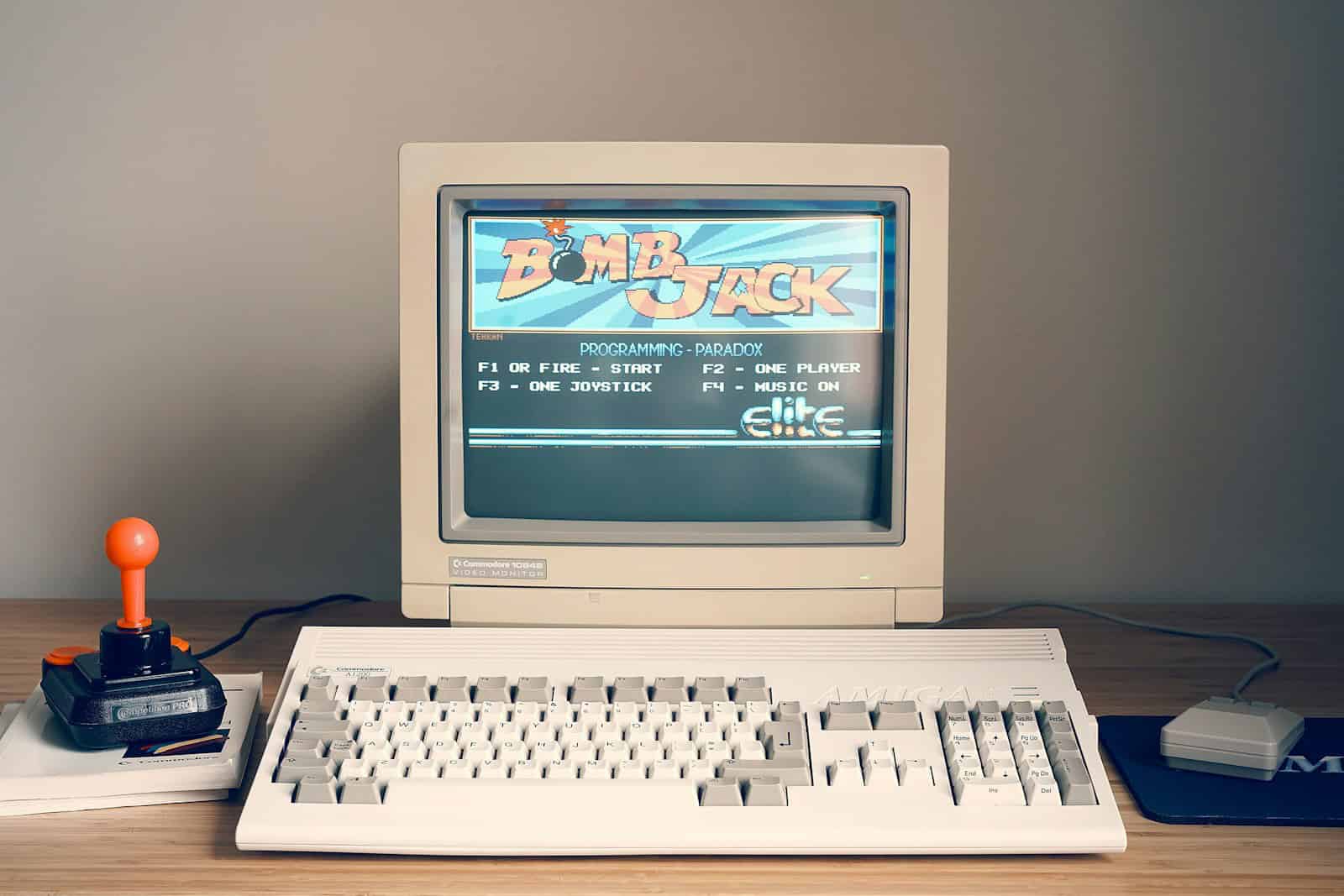Cathode ray tube (CRT) TVs are unexpectedly making a comeback as these bulky relics of the past are now sought-after items among retro gaming enthusiasts. CRT TVs offer unique advantages for playing classic video games, including superior image quality and minimal input lag. For years, old CRT televisions gathered dust in attics or ended up in landfills. Not only were they big, bulky, and practically useless – but you may have actually had to PAY to dispose of them due to the harm they caused the environment. As everyone replaced their CRT monitors and TVs with sleek flat screens, the availability of old, working displays started to dwindle.
But the recent resurgence of retro gaming has breathed new life into these once-obsolete devices and with no new supply coming onboard, their value has skyrocketed. Gamers are rediscovering the unique advantages of CRTs for playing classic games, appreciating their responsiveness, authentic display, and compatibility with older gaming technology. As a result, these bulky boxes are making a comeback, proving that what was once old can become new again in the ever-evolving world of technology.

The resurgence of CRT TVs is driven by nostalgia and technical benefits. Gamers who grew up with these televisions are rediscovering their charm. Many classic games were designed with CRT displays in mind. The technology’s inherent features, such as instant response times and deep blacks, enhance the gaming experience for older consoles. Prices for high-quality CRT TVs are rising on online marketplaces. Collectors and gaming purists are willing to pay top dollar for specific models. This trend has created a niche market for what was once considered obsolete technology. The renewed interest in CRT TVs showcases the enduring appeal of retro gaming and the quest for authentic experiences.
From Trash to Treasure: The Resurgence of CRT TVs in the Age of Retro Gaming
The Allure of Retro Gaming
Retro gaming, with its pixelated graphics and classic gameplay, has captivated a new generation of gamers. Many find joy in revisiting the games of their childhood or experiencing classic titles for the first time. This nostalgia-driven trend has fueled a demand for authentic gaming experiences, and CRT TVs play a crucial role in achieving that.
Why CRTs for Retro Gaming?
While modern flat-screen TVs offer high-definition visuals and sleek designs, they aren’t always ideal for retro games. CRTs, with their unique display technology, offer several advantages for classic gaming:
- Low Input Lag: CRTs have virtually no input lag, meaning your actions on the controller are reflected instantly on the screen. This is crucial for fast-paced games where split-second reactions matter.
- Authentic Display: Many older games were designed for CRTs’ lower resolutions and scanlines. Playing them on a modern TV can result in blurry visuals or distorted aspect ratios. CRTs provide the authentic look and feel these games were intended for.
- Light Gun Compatibility: Classic light gun games, like Duck Hunt, rely on the way CRTs refresh the screen. These games often don’t work correctly on modern TVs, making a CRT essential for fans of this genre.
Where to Find CRT TVs
If you’re looking to snag a CRT TV for your retro gaming setup, you have several options:
- Thrift Stores and Flea Markets: These can be goldmines for finding old CRTs at bargain prices. Be prepared to do some digging and inspect the TVs carefully for any issues.
- Online Marketplaces: Websites like eBay and Facebook Marketplace often have listings for CRT TVs. Check seller ratings and ask about the TV’s condition before buying.
- Recycling Centers: Some recycling centers may have CRTs available for free or a small fee. It’s worth checking with your local center to see what they have.
- Garage Sales and Estate Sales: Keep an eye out for garage sales and estate sales in your area. You might find someone looking to get rid of an old CRT TV.
Table: Pros and Cons of Using a CRT for Retro Gaming
| Pros | Cons |
|---|---|
| Low input lag | Bulky and heavy |
| Authentic display for retro games | Can consume more power |
| Light gun compatibility | Lower resolution compared to modern TVs |
| Often available at low cost | May require repairs or adjustments |
Key Takeaways
- CRT TVs are in high demand for retro gaming due to their unique display qualities
- Nostalgia and technical advantages drive the resurgence of CRT televisions
- A niche market has emerged for vintage CRT TVs, with prices increasing
History and Technology of CRT TVs
Cathode ray tube (CRT) TVs dominated home entertainment for decades. These devices used electron beams to create images on phosphor-coated screens.
Evolution of CRT Technology
The first CRT TV hit the market in the 1930s. It displayed black and white images. Color CRTs came later in the 1950s. They used three electron guns to produce red, green, and blue light.
Sony introduced the Trinitron in 1968. It had a flat screen and better picture quality. Other brands like Philips and Toshiba made their own versions. The Philips Discoverer and Toshiba AF series were popular choices.
CRT TVs kept improving over time. They got bigger screens and sharper images. By the 1990s, some high-end models could display HD content.
Distinguishing Features of CRT TVs
CRT TVs were known for their deep blacks and rich colors. They had no input lag, which made them great for gaming. These TVs were also very durable. Many lasted for 10-20 years with proper care.
CRTs were heavy and took up a lot of space. A 32-inch TV could weigh over 100 pounds. They used a lot of power too. But they were cheaper than early flat-screen TVs.
CRT TVs worked well in bright rooms. They didn’t have glare issues like some modern screens. Their curved screens gave a unique look to the picture.

CRT TVs and Retro Gaming
CRT TVs have become highly sought-after for retro gaming. These older televisions offer unique benefits that enhance classic video game experiences. Many gamers prefer CRTs for playing titles from the NES, Sega Genesis, and PlayStation 2 eras.
Why CRT TVs Enhance Retro Gaming
CRT TVs display retro games as they were meant to be seen. The low resolution matches old console outputs perfectly. Scanlines add visual charm to pixel art graphics. CRTs also have no input lag, which is crucial for fast-paced games.
Their high contrast ratio makes colors pop. Dark scenes look inky black instead of gray. Bright areas shine without washing out. This makes games more vivid and eye-catching.
CRTs have near-instant pixel response times. This eliminates motion blur in fast action. Side-scrolling platformers and racing games look crisp and clear. The smooth motion keeps gameplay fluid and responsive.
Popular Consoles and Games
The Nintendo Entertainment System (NES) kicked off the retro gaming craze. Super Mario Bros remains an iconic title. Its colorful 8-bit graphics shine on CRT screens.
Sega’s consoles also benefit from CRT displays. Sonic the Hedgehog’s speedy gameplay looks best without digital processing. The vibrant zones and detailed sprites pop off the screen.
PlayStation 2 games straddle the line between retro and modern. CRTs handle their 480i signals natively. This preserves the original look of classics like Gran Turismo and Final Fantasy X.
Choosing the Best CRT TVs for Gaming
Sony PVM monitors are prized by enthusiasts. The PVM-14M2U model is especially coveted. It offers pro-grade image quality in a compact 14-inch size. Larger consumer sets like JVC’s D-Series are great for living room setups.
Screen size matters for different types of games. Fighting game fans prefer 20-27 inch sets for local multiplayer. RPG lovers may want bigger 32-36 inch TVs to see text clearly.
Inputs are another key factor. S-Video and component connections give the best picture. Make sure the TV supports 240p for older consoles. Some later CRTs only handle 480i and up.
Connectivity and Video Signal Formats
CRT TVs use different signal types and connectors than modern displays. This affects how retro gaming systems connect to these older televisions.
Signal Types and CRT Compatibility
CRT TVs support various video signals. RF is the oldest type, used by early game consoles. It sends audio and video through one coaxial cable. NTSC and PAL are color TV standards. NTSC is common in North America, while PAL is used in Europe and other regions.
Composite video uses a single RCA cable for video. It’s easy to use but can result in a fuzzy image. S-video splits the signal into two parts. This gives a sharper picture than composite.
Component video uses three cables for the best analog picture quality. It can handle higher resolutions than other analog formats.
Most CRTs have a 4:3 aspect ratio and support 480i resolution. Some high-end models can display higher resolutions.
Modern Devices and CRT Connectors
Connecting modern devices to CRTs can be tricky. Many new consoles lack analog outputs. Adapters or converters are often needed to bridge this gap.
Some options include:
- HDMI to composite converters
- HDMI to component adapters
- Dedicated retro gaming cables
These tools help link new systems to old TVs. But they may not always give the best picture quality.
For the most authentic experience, original cables and connectors are best. RCA, S-video, and component inputs on CRTs allow for direct connections to many retro consoles.
Some modern retro-style consoles include CRT-friendly outputs. This makes connecting to old TVs easier without extra gear.
The Market and Community of CRT TVs
CRT TVs have seen a resurgence in popularity due to retro gaming enthusiasts. This revival has created a unique market and fostered dedicated online communities.
Demand and Availability
The demand for CRT TVs has skyrocketed in recent years. Retro gamers seek these old-school televisions for their low input lag and authentic gaming experience. Prices for high-quality CRTs have risen sharply. Some models, like the Sony GDM FW900, can fetch over $3000. This surge in interest has made finding CRT TVs more challenging. Many were discarded as e-waste when flat screens became popular. Now, gamers scour thrift stores, yard sales, and online marketplaces for these once-obsolete devices. The scarcity has turned CRT hunting into a hobby itself.
Online Communities and Resources
The CRT revival has sparked active online communities. Forums and social media groups bring together enthusiasts to share tips and knowledge. Popular YouTube channels like “My Life in Gaming” offer in-depth content on CRT gaming. These platforms help newcomers learn about:
- Best CRT models for gaming
- Proper setup and maintenance
- Modding techniques
Online resources also include buying guides and repair tutorials. This wealth of information helps preserve CRT technology for future generations of gamers.







